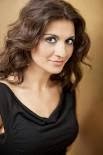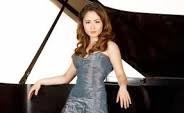The magic of Märkl brings 2013's Classical Series to a close

Among the guest conductors who can be counted on to get good things out of the Indianapolis Symphony Orchestra is the Japanese-German maestro Jun Märkl . It happened again Friday night at the Hilbert Circle Theatre, particularly after intermission, when Märkl led the ISO in Beethoven's Symphony No. 2 in D major, op. 36. There was something in the air in this performance, perhaps a tinge of regret from the stage that the musicians were playing the last classical program in their home hall until January. Märkl worked wonders with the ISO and Beethoven. So they may have felt it was incumbent upon them to give all they had for a conductor they clearly respect and respond to. All right, so there were moments in the Scherzo and the finale when the violins could have been more together, and there was too much trumpet in the first movement's exposition. But let me hang out the "CLOSED" sign on the Quibble Department door for now












